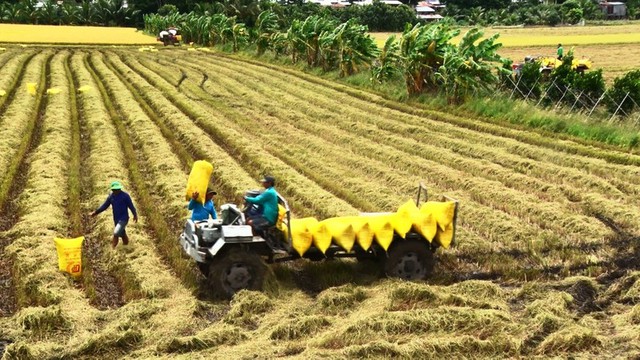Prices of Vietnamese rice exports at world's highest
VGP - Since August 2022, the export price of Viet Nam's 5 percent broken rice (gạo tấm) has always been at a high level, sometimes surpassing Thailand and India and reaching the highest level in the world, according to the Ministry of Industry and Trade.

Illustration photo
The data of the Viet Nam Food Association also shows that, from the beginning of 2023 to the middle of March 2023, Viet Nam's 5 percent broken rice exports reached the price of US$468-472/ton.
The price hikes of rice exports in recent years came as a result of increased import demand from foreign countries due to the policy of ensuring food security.
Meanwhile, India still bans export of broken rice and imposes a 20 percent tax on white rice exports, therefore, customers are looking to markets with more competitive prices, including Viet Nam.
On the other hand, from the beginning of January 2023, China reopened its borders after a long time of restricting trade due to the Covid-19 epidemic, which also increased the country's rice imports significantly.
Besides those objective reasons, subjective reasons are significant. Specifically, the quality of Viet Nam's rice has been continuously improved. In the structure of exported rice, fragrant rice and high-quality rice are currently at the top position.
Viet Nam's rice export market also has a flexible and diverse orientation. Viet Nam is no longer too dependent on traditional markets but has penetrated many high-quality markets and regions such as Europe and Japan, opening up great opportunities for growth in export turnover.
In particular, specialty rice types such as ST24 or ST25 exported to Europe have prices up to more than US$1,000/ton.
This is considered a victory for Viet Nam's rice industry in restructuring, shifting from focusing on quantity to quality. This is also the primary trend in developing Viet Nam's rice industry in the coming years.
However, to maintain and further raise the rice export price, this industry must continue promoting linkages in production-processing consumption.
Besides, we must pay attention to harmonizing interests in rice production and export, especially ensuring profits for rice farmers at a level commensurate with the rice export price./.
